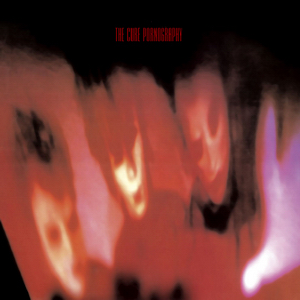Here is something you are not going to read very often: 2021 was a fantastic year. Not for the world as a whole, of course, but in terms of new quality releases, it was easily the best year in a very long time. Naturally, it is difficult to see this as a seperate thing from the ongoing pandemic. Established names suddenly had the time to put together excellent albums rather than rushing them out as a reason to go on tour again. It has been harder for relatively new names, though – spoiler alert – they are not entirely absent from my list of the best albums released in the last twelve months.
In order to celebrate the large amount of excellent new releases, I thought it would be appropriate to bring the number of titles in my list back from fifteen to twenty. While it has been difficult to even come up with fifteen releases for some of the last few “best of the year” lists, selecting twenty has been ridiculously easy this year, with the only difficulty being to decide who would not make the cut. There are a few that have not that would easily have made it in most of the past few years.
Truth be told: it is quite a relief not having to make any cynical remarks about the state of the music business in the opening paragraphs of this post for a change. Hopefully it will not be the last time. Alright, I have stalled long enough, let’s jump straight in.
1. Smith/Kotzen – Smith/Kotzen

Serves me right for thinking this was one of those hastily tossed together Frontiers Records all-star projects. Frontiers had nothing to do with it and fortunately, the involvement of Adrian Smith – probably my favorite songwriter in Iron Maiden – made me curious enough to check out his project with Richie Kotzen. It has been a very long time since I heard such good songwriting and such spirited performances come together on a single album. Kotzen is clearly more flamboyant, both vocally and in terms of guitar solos, but he leaves plenty of room for Smith to play and sing his heart out. They also harmonize really well. Bluesy, incredibly soulful and always melodic: Smith/Kotzen’s first album might just be my favorite rock debut since Bad Company’s nearly fifty years ago.
Recommended tracks: ‘Scars’, ‘Glory Road’, ”Til Tomorrow’
2. Rakshasa – Hyakka Sousei

Another surprise I may not have been ready for. Rakshasa’s debut album showed promise, but also had a few too many upbeat J-Rock detours. Sophomore album ‘Hyakka Sousei’ shows so much unexpected growth that it is almost difficult to believe. The riffs of guitarist Kikka and bassist Yama are straight out of the melodic end of the extreme metal playbook, but the haunting, melancholic melodies and Yuri’s yearning, at times dreamy vocal performance give ‘Hyakka Sousei’ a rather unique character that I happen to love. All the band really did different than on its predecessor was a bit of streamlining, but that shifted the focus towards Rakshasa’s immense strengths. Folk metal without the occasional party atmosphere? J-rock-influenced progressive power metal? I have no idea either, but I do know that it still gives me goosebumps every time I put it on.
Recommended tracks: ‘Mihata No Motoni’, ‘Genren’, ‘Ryojyun’, ‘Harukanaru Wadatsumi’
3. Flotsam And Jetsam – Blood In The Water

Flotsam And Jetsam has been balancing on the tightrope between aging gracefully and being a husk of its former self for ages. ‘Blood In The Water’ finds them more firmly on the right side of that equation than I expected. Eric ‘A.K.’ Knutson is one of the best thrash metal singers to this day, but some of their twenty-first century output saw the band either desperately holding on to their past or only partially succeeding to adapt to modern trends. Weirdly, ‘Blood In The Water’ is a bit of both. The abundance of melodies is classic heavy metal, but the bite of the production and the riff work is remarkably contemporary, sometimes feeling like Nevermore reinterpreting eighties Metallica. All of this was hinted at on its predecessor ‘The End Of Chaos’. I just had not anticipated the songwriting improving enough to have the band churn out the best thrash metal album of the year just yet.
Recommended tracks: ‘Seven Seconds ‘Til The End Of The World’, ‘Grey Dragon’, ‘Blood In The Water’
4. Galneryus – Union Gives Strength

Galneryus themselves call ‘Union Gives Strength’ a “special album”, likely because they were apprehensive about calling an album with 46 minutes of new music and two remakes a full-length. However, the change in format is exactly what Galneryus’ increasingly predictable and formulaic album output needed. It’s not just the different format that makes ‘Union Gives Strength’ so good though. The songwriting is simply excellent here. Overall, the songs a bit darker and more aggressive than one would expect from the band’s anthemic power metal, but everything is still instantly recognizable as Galneryus. ‘The Howling Darkness’ is their best opener in nearly a decade and worth getting the album for by itself. Let’s hope that this special album inspires a new norm for Galneryus.
Recommended tracks: ‘The Howling Darkness’, ‘Flames Of Rage’, ‘Bleeding Sanity’
5. Obscura – A Valediction
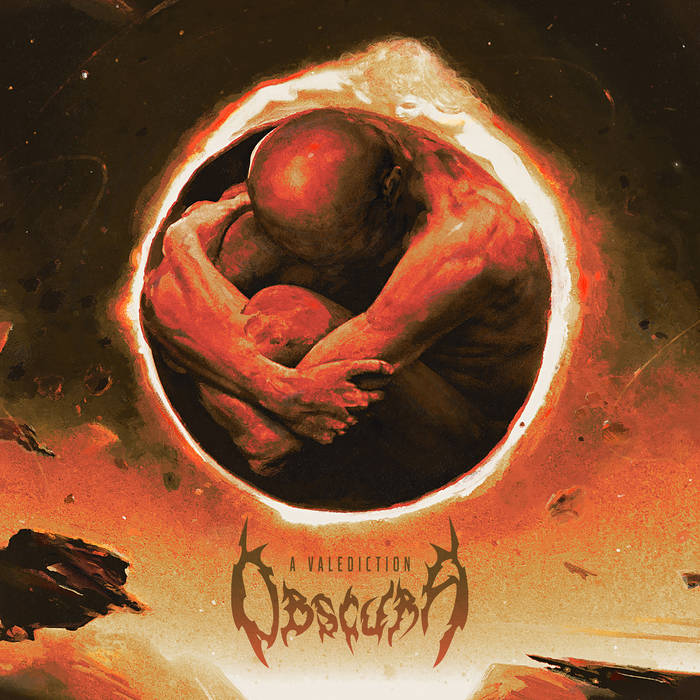
Obscura was always my favorite out of the wave of technical death metal bands that popped up around a decade and a half ago. They were better songwriters and far more melodic than their peers. ‘A Valediction’ takes this melodic approach and runs with it. Though instantly recognizable as Obscura, the band has never sounded this overtly melodic. They should though. I rarely come across albums on which melody, complexity and aggression are in such perfect balance. Not unlike their breakthrough album ‘Cosmogenesis’, ‘A Valediction’ proves that you do not have to sacrifice any memorability when making an intricate album. Maybe it has something to do with ‘Cosmogenesis’ and ‘Omnivium’ alumni Christian Münzner and Jeroen Paul Thesseling returning to the band.
Recommended tracks: ‘Forsaken’, ‘In Adversity’, ‘When Stars Collide’, ‘A Valediction’
6. Cryptosis – Bionic Swarm

What a debut! As far as I am concerned, Cryptosis is the breath of fresh air that the technical thrash metal scene needed. While most new bands are trying to emulate Vektor to the best of their ability, Cryptosis really does something unique by blending their thrash riffs and hyperspeed progressive rhythms with black metal-esque dissonance and nearly psychedelic synth work. It was the admirable precision in their blazing riff work that drew me in, but once you let ‘Bionic Swarm’ wash over you, it becomes an experience. The album proves that technical thrash metal with sci-fi themes can be so much different than how most bands choose to do it and I hope Cryptosis will lead the scene by example from now on.
Recommended tracks: ‘Transcendence’, ‘Flux Divergence’, ‘Conjuring The Egoist’
7. Rage – Resurrection Day
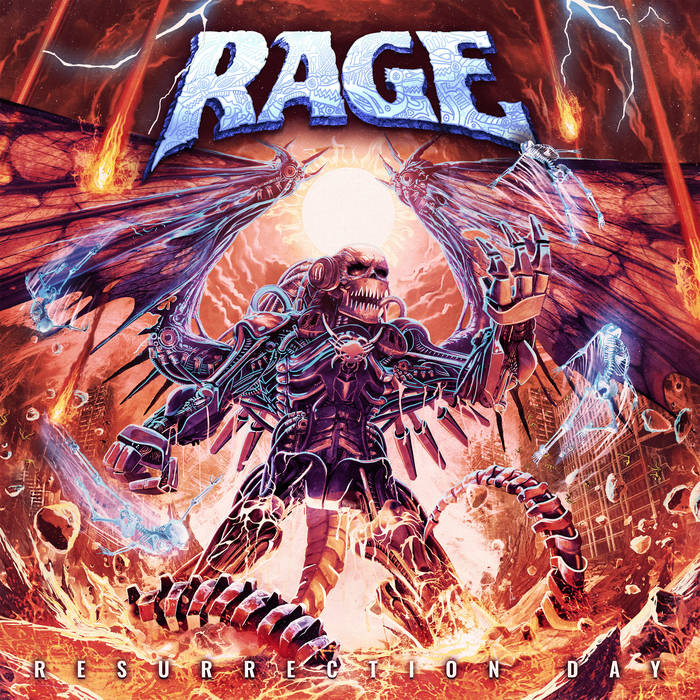
Peter ‘Peavy’ Wagner is a great songwriter. And yet, I have not enjoyed a full Rage album for nearly two decades. Until ‘Resurrection Day’. It is not completely flawless, but there are too many good riffs and memorable melodies on the album to let ‘Monetary Gods’ and the occasional clunky lyric ruin my enjoyment. Stylistically, ‘Resurrection Day’ finds middle ground between the borderline hardrock of their mid-nineties records and the modern power metal of the earliest albums with Victor Smolski on guitar. A winning combination that I hope the Germans will be able to build on for a few more albums. As I stated in the full review: I honestly thought Peavy did not have an album this good in him anymore.
Recommended tracks: ‘Arrogance And Ignorance’, ‘Man In Chains’, ‘Virginity’
8. Mastodon – Hushed And Grim
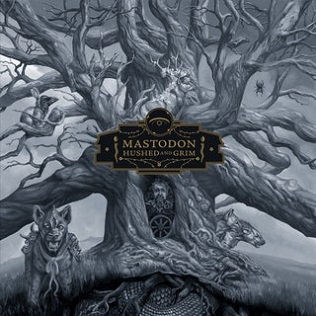
Whenever Mastodon manages to combine their more melodic side with clear progressive leanings, the results are spectacular. ‘Hushed And Grim’ is a double album full of dynamic songwriting, sludgy riffs and haunting guitar melodies. And unlike the next title on this list, I think the double album format works in the music’s favor. It would have nearly fit on one cd, but the album is divided into two acts this way, the former ever so slightly more accessible and the latter a bit more riff-driven. One thing I always loved about Mastodon compared to their peers is how organic and natural everything sounds, particularly when it comes to Brann Dailor’s drums. Mastodon will probably never be able to top ‘Crack The Skye’ for me, but ‘Hushed And Grim’ is the closest they have come since.
Recommended tracks: ‘Savage Lands’, ‘Dagger’, ‘Pushing The Tides’
9. Iron Maiden – Senjutsu

Let’s get my main criticism out of the way: ‘Senjutsu’ is the second Iron Maiden studio release in a row that really did not need to be a double album. A bit of trimming in Steve Harris’ solo compositions and it would have been an even better single-disc album. Every song Adrian Smith and Janick Gers contributed to is a winner, however, and the performances on ‘Senjutsu’ are good enough to make even some of the more long-winded songs an engaging enough listen. At its best moments, ‘Senjutsu’ is a reminder that Iron Maiden still has not forgotten how to write a fantastic heavy metal song. There are plenty of much younger bands that can learn a lesson or two from ‘Senjutsu’. Just not from its lack of self-editing skills.
Recommended tracks: ‘Stratego’, ‘Senjutsu’, ‘The Writing On The Wall’
10. Crystal Viper – The Cult
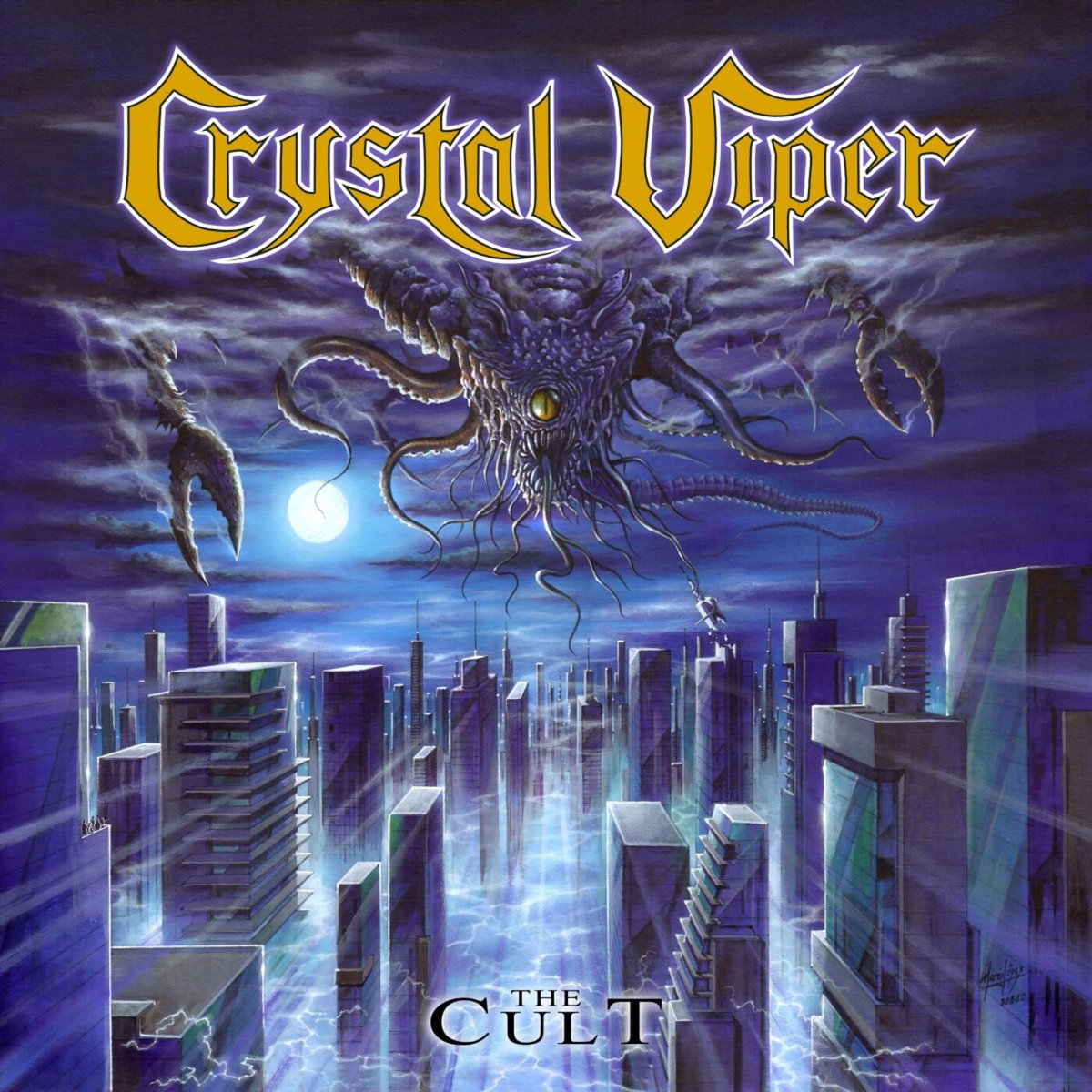
Despite having a weak spot for Marta Gabriel’s passion for good old-fashioned heavy metal, I gradually lost interest in Crystal Viper over the years. The band’s 2019 release ‘Tales Of Fire And Ice’ finally shook things up a bit with its hypermelodic approach and now that Crystal Viper returns to full-on heavy metal with ‘The Cult’, they seem reinvigorated. Gabriel welcomed significant input from her band mates this time around and especially drummer Cederick Forsberg contributed some lively riffs and melodies to the album. Gabriel’s own voice sounds better than ever as well. ‘The Cult’ was the first pleasant surprise of the year for me and I still listen to the album with a big smile on my face.
Recommended tracks: ‘Down In The Crypt’, ‘The Cult’, ‘Forgotten Lands’
11. At The Gates – The Nightmare Of Being

This one took me an excessively long time to get into. At The Gates is focusing on their atmospheric side here, with a greater emphasis on clean and acoustic guitars, keyboards, even including a string section and multiple other classical instruments. There is still an abundance of the melodic death metal riffs At The Gates helped pioneer, however, and it was a smart move to place the songs that most prominently feature them at the beginning of the album in order to ease the listener into the album’s direction. Truth be told, I prefer ‘The Nightmare Of Being’ when it is at its least typically At The Gates, most prominently the oppressive post-punky darkness of ‘Cosmic Pessimism’. Give this album the time it needs to sink in and you might enjoy it as much as I do now.
Recommended tracks: ‘Cosmic Pessimism’, ‘Cult Of Salvation’, ‘Eternal Winter Of Reason’
12. Kiyoshi – Kiyoshi6

Japanese bass virtuoso Kiyoshi broke with her tradition of releasing albums on October 31st this year, but she fortunately continued to make interesting – and incredibly catchy – music using only bass, drums and vocals. It sounds like she embraced the possibilities of layering parts even more than before, to the point that she could trick listeners into thinking there are guitars added to the mix. Kiyoshi’s approach was always interesting, but her songwriting chops have improved massively over the last few years and ‘Kiyoshi6’ is all the better for it. The amount of variation is also admirable, especially given the limited number of instruments used. Most of it broadly falls under the alternative rock banner, but Kiyoshi’s fairly aggressive right hand technique frequently gives the proceedings a delightfully funky edge.
Recommended tracks: ‘Change’, ‘I Don’t Need’, ‘Glorious Days’
13. Myles Kennedy – The Ides Of March
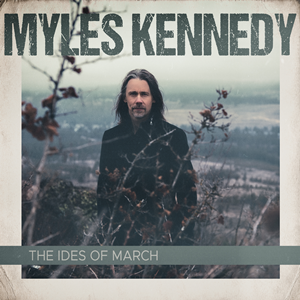
As much as I love Myles Kennedy’s voice, the thing I appreciate most about him is how he continues to stretch the boundaries of accessible rock music on everything he does. His emotional, largely acoustic solo debut ‘Year Of The Tiger’ was about as far removed from the borderline metal of Alter Bridge and with the same group of musicians, he recorded the much harder rocking, but still fairly rootsy ‘The Ides Of March’. Kennedy’s voice is in excellent shape as always, but it is mainly his guitar playing that impressed me here. He tackles muscular rock riffs, bluesy slide work, jazzy chord voicings, americana-styled acoustic songs, southern rock harmonies and impressive solos in every one of those styles. One of the most talented musicians and songwriters of his generation and an extremely friendly guy to boot.
Recommended tracks: ‘A Thousand Words’, ‘The Ides Of March’, ‘Get Along’
14. Steve Hackett – Under A Mediterranean Sky

Steve Hackett released two albums in 2021. Perhaps surprisingly, the one on which he plays acoustic instruments exclusively is my clear favorite of the two. ‘Under A Mediterranean Sky’ is different from Hackett’s previous acoustic albums, because the main focus is not just Hackett playing his classical guitar. Roger King’s orchestrations are of vital importance to many of the arrangements, adding so much more depth than an album full of classical guitar could have had. In addition, Hackett never explored the folk music traditions of the regions he honored so thoroughly as on ‘Under A Mediterranean Sky’. For a project that was basically born out of lockdown restrictions, it is surprisingly realized and full of compositional brilliance. And the playing is spectacular, but would you have expected anything else from Hackett?
Recommended tracks: ‘The Dervish And The Djinn’, ‘Mdina (The Walled City)’, ‘The Memory Of Myth’
15. Jerry Cantrell – Brighten
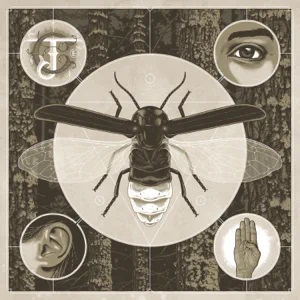
Jerry Cantrell’s previous solo album ‘Degradation Trip Volumes 1 & 2’ is my favorite album of all time. Given the fact that I prefer fourteen albums from this year alone to it, it is clear that ‘Brighten’ did not have the same impact on me. But it is still evidence of Cantrell’s songwriting excellence. Not unlike his solo debut ‘Boggy Depot’, the album sounds a bit more positive what he is known for, but darkness is never far from Cantrell. The americana influences are more prominent than on anything he has done to date, as are the keyboards, but his fingerprint is all over the vocal harmonies and guitar work. Having said that, my favorite moments on ‘Brighten’ are admittedly the ones that sound closest to Alice In Chains.
Recommended tracks: ‘Siren Song’, ‘Atone’, ‘Had To Know’
16. Thunder – All The Right Noises
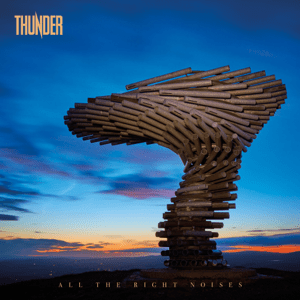
Great British rock songwriters are hard to come by these days, but at least Thunder guitarist Luke Morley is keeping the tradition alive. Sure, it helps that Danny Bowes’ voice is still every bit as good as it was when ‘Backstreet Symphony’ was released more than thirty years ago and that the performances on ‘All The Right Noises’ are among the most lively in the band’s career, almost sounding like a particularly well-recorded live performance of the world’s best bar band, but the best Thunder albums start with great songs. ‘All The Right Noises’ has plenty of them, all recorded with a mildly soulful swagger that makes the album stand out among the band’s discography. The limited edition of the album contains four more new songs, all of which are good enough to have made it onto the regular album.
Recommended tracks: ‘Don’t Forget To Live Before You Die’, ‘Destruction’, ‘The Smoking Gun’
17. Edu Falaschi – Vera Cruz

Another album I did not expect the artist to have in him anymore. Despite the constant risk of collapsing under the weight of its own ambition, this comeback album of former Angra singer Edu Falaschi holds up surprisingly well. Falaschi wrote a bunch of fantastic power metal songs for ‘Vera Cruz’ and the guitar work on the album is nothing short of spectacular. The subtle touches of Brazilian folk and pop music definitely make ‘Vera Cruz’ more than just another above average power metal album and I think I would like to hear more of that on a next album. While it is not quite as good as what Angra is doing these days, Falaschi seems reinvigorated as a songwriter. Hopefully he can keep the creative juices flowing and his excellent backing band together for a few more albums.
Recommended tracks: ‘The Ancestry’, ‘Land Ahoy’, ‘Crosses’
18. Ningen Isu – Kuraku

As a power trio that gets more powerful with age, Ningen Isu has consistently been releasing some of their best material in the last decade. ‘Kuraku’ is not quite at the same level as ‘Shin Seinen’ or the incredible ‘Kaidan Soshite Shi To Eros’, but it does feature the band doing what they do best: jamming on heavy riffs that would make Tony Iommi proud. In fact, ‘Kuraku’ might be one of the most Sabbath sounding records in the band’s discography. It is admirable how Ningen Isu can engage in spirited jams without losing track of their strong compositions and that is exactly what makes ‘Kuraku’ such a solid album. Nothing fancy, just great riffs and even better performances.
Recommended tracks: ‘Kanagami No Koshin’, ‘Uchu Kaizoku’, ‘Akuma No Shohosen’
19. Witherfall – Curse Of Autumn

A handful of overly repetitive choruses keep ‘Curse Of Autumn’ from being the masterpiece that Witherfall’s sophomore album ‘A Prelude To Woe’ was. However, the combination of influences is something I wish more younger bands would attempt. And when Witherfall hits their marks on ‘Curse Of Autumn’, it is clear that they are one of the most talented metal bands – possibly the most talented – that started less than ten years ago. Dark and heavy riffs, elegant melodies and song structures that demand your attention are everywhere on ‘Curse Of Autumn’. While some of the songs are streamlined a bit more than they should, especially the longer tracks are more evidence of Witherfall’s exceptional compositional skills. It is also the best-sounding album recorded at Morrisound since Scott Burns quit.
Recommended tracks: ‘…And They All Blew Away’, ‘Tempest’, ‘The Last Scar’
20. Helloween – Helloween

The return of Kai Hansen and Michael Kiske to Helloween understandably came with a lot of fanfare. But at the end of the day, ‘Helloween’ is simply another twenty-first century Helloween album. Certainly one that is better than anything they released over the last decade, but not really anything they could not have done without Hansen and Kiske. With one exception: the band really makes the best out of all the opportunities it has vocally. Especially Andi Deris seems to get a kick out of contrasting his own rougher-edged vocals with Kiske’s higher ultra-cleans and harmonizing appropriately. In true Helloween fashion, the album is inconsistent and a bit too silly at times, but when ‘Helloween’ is good, it is amazing.
Recommended tracks: ‘Best Time’, ‘Angels’, ‘Fear Of The Fallen’
